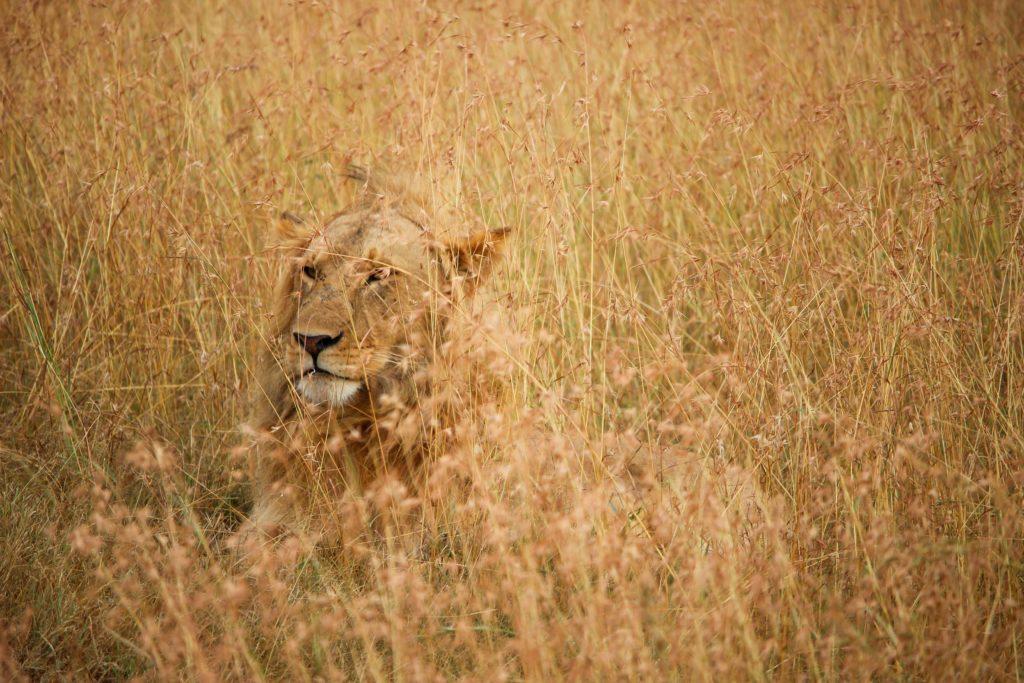Chase the Strays


This blog is an excerpt from the free eBook, Stay the Course: Seven Essential Practices for Disciple Making Churches. Download it free here.
I love watching documentaries and educational programs about wildlife. When perusing television channels I rarely flip past something produced by National Geographic. One of my favorite specials is about African lions.
Here’s the scene. It’s the classic African Serengeti landscape, heat waves rising from the earth, distorting the camera’s view. Colorful birds crisscross the sky and the camera zooms in on a herd of wildebeests. The screen shows hundreds of these animals grunting and grazing their way across the plains in search of a waterhole. The commentator describes the typical habits of the wildebeest even though you know the show is about lions—hungry lions.
The camera then pans and you see several ears poking just above the sun-bleached grass. A number of female lions watch the nervous herd of wildebeests pass by. Their tails flick back and forth at pesky flies, yet their eyes remain fixed on the herd.
Then, it happens, what I knew was inevitable. One of the wildebeests, for whatever reason—sickness, injury, or stupidity—separates from the herd, its head down, feeding on grass. I watch as the poor wildebeest strays further and further from the safety of the herd.
This is from Brandon’s eBook, Stay the Course. Download the eBook here in your favorite format at no cost.
I always thought the lions should pounce at that moment, but they never do. They know what they are doing. One or two lions go between the wildebeest and the herd, scaring the lone wildebeest, who bolts and runs away. Often, it runs further and further from the safety of its friends. At that time all protection is gone and the herd’s straying friend is alone. Lions spring out from the grass as if out of nowhere. The trap was laid, and within seconds the circle of life continues for some and ends for the lone wildebeest.
This picture of nature is how I have often viewed what happens in the church with those that make up her body. Jesus even refers to us using flock language, calling us sheep (John 10). Even more, he refers to Satan as a roaring lion seeking to devour us (1 Peter 5:8).
In the church today
Today in the church, I so often see people begin to stray from God and the flock for various reasons—priorities, sin, jobs, or activities. They become busy and distracted with life, and before they know it, they are separated from the herd.
The fourth guardrail principle from my free eBook, Stay the Course, is chase the strays. We know that danger lies out in the grass and yet even with God, our shepherd, we can become a spiritual meal for the Evil One. We, as Christians, have a responsibility not only to remain connected ourselves, but also to go after the strays. Too often, even pastors do not know where the sheep from their flock have gone. I believe we owe it to each other to chase after someone when we see a gap begin to grow.
As a pastor I know that I cannot shepherd every person in my church. It is my responsibility to create a culture of chasing strays. I need to make sure it is happening, not necessarily do it all myself. The staff, small group leaders, and volunteers must know that this is a guardrail for our church. We are commanded by God to care for his sheep, and when they stray, we go after them. This guardrail principle, like the others, is about building a culture that ensures this is happening. It must become who we are, and we are people who, like Jesus, chase those who stray.
How to chase the strays
Ezekiel 34 lists seeking out the strays as one of the acts of true shepherding. Leaders must model this type of shepherding for those we lead so that we create a shepherding culture. It begins as an organized activity, but becomes organic and a personal value for all those we lead. As a pastor or shepherd of people, we must know where our leaders, volunteers, and attenders are. We must ask, Who is missing? Who is disconnecting? We must know because God expects that from us. Neglecting this command from Ezekiel 34 can leave our people separated from the herd, making them prey for the Spiritual Predator.
So how do you chase the strays? First, you must know who is missing. Begin asking questions, looking around for those you do not see or have not seen recently. If the family who attends your group or sits in the same spot every week is missing, you have to go after them. You may want to try what I do every week: I sit down and think through whom I have not seen. Then, I pursue them through phone calls, meetings, home visits, and the like. A culture of caring for and noticing those who are missing must be built up. Remember that it takes time and that it will not happen if those who are in the highest positions of shepherding do not lead by example.
*Stay tuned by coming back to our blog for more in this blog series about staying the course from Brandon Guindon.
by Brandon Guindon
This blog is part of the free eBook, Stay the Course: Seven Essential Practices for Disciple Making Churches.
You can down it by clicking here.
Brandon Guindon has over 15 years experience leading churches to become disciple-making bodies of Christ. Brandon holds a Bachelor of Science in Health Science from Linfield College and a Master of Arts Church Leadership and New Testament Theology from Hope International University. He was ordained at Real Life Ministries in Post Falls, ID. He is a published author and a member of the Board of Directors for the Relational Discipleship Network. The Guindons (Brandon and Amber, Emma, Olivia, Grady, and Garrett) moved to Houston in 2013 from their home state of Idaho.
If you have enjoyed reading this, please consider joining our email list!











